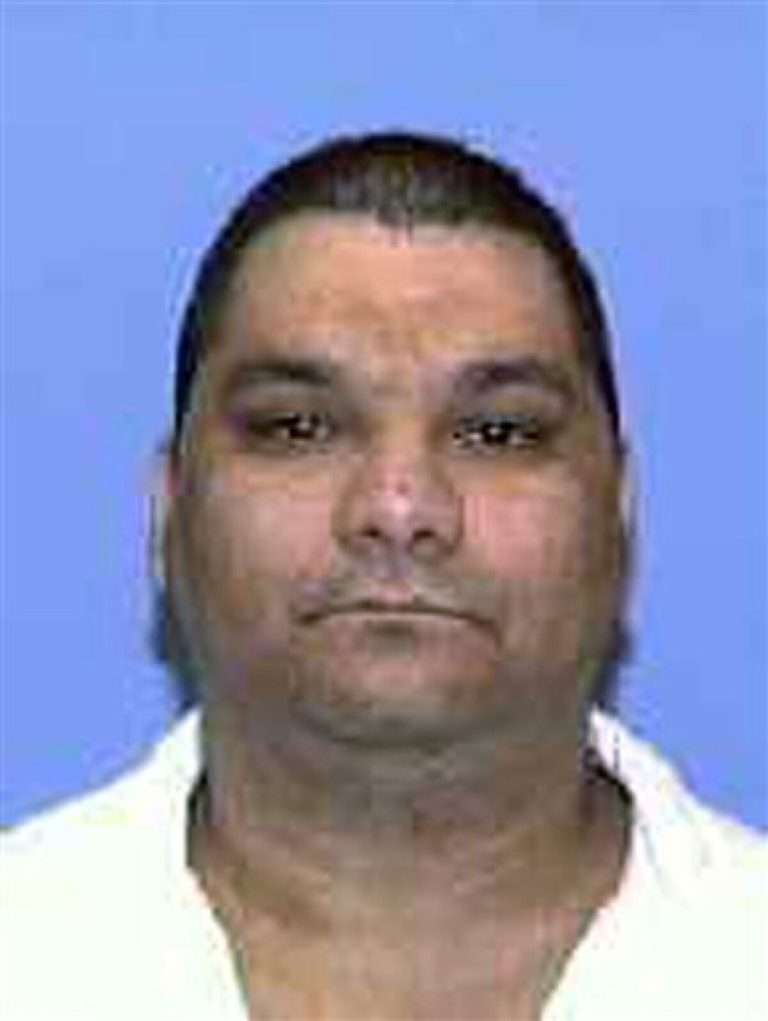Randall Deviney Murders Delores Futrell In Florida
Randall Deviney was sentenced to death by the State of Florida for the murder of Delores Futrell
According to court documents Randall Deviney would stab to death sixty five year old Delores Futrell before robbing her
Randall Deviney would be arrested, convicted and sentenced to death
Randall Deviney Photos

Randall Deviney FAQ
Where Is Randall Deviney Now
Randall Deviney is incarcerated at Union Correctional Institution
Randall Deviney Case
On August 5, 2008, at 10:01 p.m., a Jacksonville police dispatcher received an unverified 911 call from Futrell’s residence.2 Along with another officer, Officer Milowicki of the Jacksonville Sheriff’s Office responded to the call.
As the officers approached Futrell’s townhome at approximately 10:40 p.m., they noticed that the interior lights were on and heard a television playing. They knocked on the door while calling into an open window; they received no response. Then, the officers attempted to access the backyard, but a tall, locked fence blocked their entrance. Returning to the front, the officers proceeded into the home through the unlocked front door.
Milowicki found Futrell lying on the carpet in front of her television. She recalled:
It was a petite, elderly female. She was cut ear-to-ear and the cut was so deep that it was hanging by just skin on the back of her neck. Her shirt was pulled over her torso exposing her torso. And her underwear, she just had underwear on and the underwear was sliced at the crotch area and pulled up by her hips. So she was nude from the waist down. And her legs had appeared to be posed in a sexual manner showing her genitalia.
Strangely, there was little blood inside the home. Milowicki observed a small table in the dining room with objects knocked over beside a cordless phone base. The phone was on the dining room table and, based on the call log, the police determined that it had been previously used to dial 911. The contents of a purse were emptied onto Futrell’s couch; however, Futrell’s wallet was across the room on an ironing board. Credit cards laid scattered beside the wallet, which contained a total of fifty-six cents. Behind the ironing board, near the back door, Milowicki saw a pair of bloody blue jeans.
While walking in the backyard, Milowicki heard “what sounded like a squeegee noise around [her] feet.” Her flashlight confirmed that she was standing in a pool of blood that engulfed her shoes. From that vantage, in the center of the backyard, Milowicki noticed blood stains on and near a koi pond in the corner along the fence. Further, she noted that although the pond was lit by a white light, the water was “bright red.” A blood trail led from the pool of blood toward Futrell’s home. Along that path, beside the back door, was a chair with a blood stain on its armrest.3 The police found no signs of forced entry.
The crime scene unit, including Detective Gray, arrived around midnight. While examining the backyard, Gray identified the blood on the ledge and side of the koi pond as transfer blood. In multiple areas, both on and near the concrete steps beside the koi pond, Gray found blood stains. Later, when Gray drained the koi pond, he was unable to find a weapon. However, near the large blood pool in the center of the backyard, Gray located a piece of knife blade from a straight-edged knife. From the pool of blood, a blood trail led to the koi pond; another blood trail led to the home.
Inside the home, Gray examined Futrell’s body, noting blood on the bottoms of her feet along with grass in her hair and on her left arm. Futrell’s bra, shirt, and underwear were cut. There were abrasions and scrapes on Futrell’s lower back consistent with being dragged. Gray opined that, based on the evidence, Futrell was killed in the backyard, dragged inside her home, and—possibly—posed in an explicit position to resemble a sexual battery. However, Gray was unsure whether Futrell’s clothing was cut and removed outside or inside her home. None of the latent fingerprints lifted from Futrell’s home belonged to Deviney.
Dr. Giles, M.D., a forensic pathologist, conducted an autopsy on Futrell’s body. Futrell was sixty-five inches tall (5’5‘), 138 pounds, and sixty-five years old. Dr. Giles determined that the cause of death was hypovolemic shock with asphyxiation due to an incised wound of the neck, laryngeal transection: “In layman’s terms, she received a large cut across her neck [that] went right through her voice-box and she bled and couldn’t breathe.” Futrell suffered both blunt- and sharp-force injuries. Based on his examination, Dr. Giles believed that “there definitely was a struggle involved in this death.” The manner of death was determined as homicide.
On the left side of Futrell’s head were various blunt-force injuries: contusions and abrasions around her eye, forehead, and temple, plus abrasions around the nose and mouth. On the right side of Futrell’s head, near her mouth and eye, were different types of abrasions than those on the left. Dr. Giles opined that these particular abrasions occurred later in the course of events, either when Futrell was nearly or already dead, because they were yellow.4
According to Dr. Giles, the large cut across Futrell’s neck went from right to left. It sliced through Futrell’s veins, but not her deeper arteries. However, it partially severed the jugular vein, the major vein on the right side of the neck, which meant that it could not snap shut and continued to bleed. Dr. Giles noted that the incision “completely separated” the upper and lower larynx between the vocal cords. Behind that, the esophagus was partially cut. Taking these together, Dr. Giles opined that Futrell was pulling blood into her lungs as she struggled to breathe. Dr. Giles testified that this sharp-force injury was a straight, clean cut, indicating that it was delivered with a non-serrated blade. When asked how long Futrell lived after her throat was cut, Dr. Giles testified that he could not give a definite answer. However, Futrell lived for only “a short time” due to her neck wound, anywhere from seconds to a few minutes.
Coupled with that injury, Dr. Giles found a major blunt-force injury to Futrell’s neck. Specifically, Dr. Giles observed evidence of crushing blunt force applied to Futrell’s upper neck, fracturing her hyoid bone.5 The larynx was fractured above the cut as well. Because these fractures stopped at the cut, and there was little hemorrhaging in the fractures, this injury likely occurred after Futrell’s neck was cut. In Dr. Giles’ opinion, the crushing-type force was applied on both sides of Futrell’s neck, consistent with strangulation or a choke hold. Dr. Giles testified that this injury occurred prior to Futrell’s death; however, it was late in the process.
Aside from the fatal neck injuries, on Futrell’s chest were various blunt- and sharp-force injuries. There were superficial incisions. Further, small pricks indicated where Futrell was poked with a sharp object. Some of the injuries on her chest were consistent with dragging a sharp object against it. One injury on her chest was a pattern injury, an abrasion with an unusual outline. Dr. Giles testified that this pattern was consistent with a serrated knife, but it could have been made by a broken knife blade. Dr. Giles could not definitively testify as to the sequencing of the injuries on Futrell’s chest in relation to the fatal neck wound. However, he opined that the superficial cuts and pricks must have occurred at or about the same time due to bruising.
On Futrell’s left arm were abrasions and sharp-force injuries. Various contusions and bruises on Futrell’s hands and arms appeared to be defensive wounds. However, there was little to no blood on Futrell’s hands. Futrell’s lower back had a large abrasion, which indicated that she had been dragged. Another abrasion on her lower back suggested that Futrell had a garment on when the injury occurred.
When Dr. Giles conducted the autopsy, Futrell’s shirt was still rolled up. There were cuts on the shirt, but when the shirt was rolled down one cut did not align with the injuries on her body; thus, Dr. Giles concluded that the particular injury occurred when Futrell’s shirt was rolled up. A sexual battery kit was used to test Futrell’s oral, vaginal, anal, and breast areas. There were no injuries to Futrell’s sexual organs. This led Dr. Giles to the conclusion that no sexual activity occurred; however, he could not rule out the possibility that attempted sexual activity occurred. Finally, Dr. Giles took Futrell’s fingernail clippings for DNA testing.
Evidence was sent to the Florida Department of Law Enforcement (FDLE) for DNA testing. FDLE conducted tests on the blue jeans from Futrell’s house, which tested positive for blood and negative for semen. The test on Futrell’s bra yielded the same results. All of the swabs taken as part of the sexual battery kit tested negative for semen. A swabbing from a flashlight found in Futrell’s home was tested, but Randall Deviney was excluded as a contributor to the DNA mixture on the flashlight. Preliminary DNA testing of Futrell’s right fingernail clippings matched Randall Deviney. When the DNA profiles of Deviney and Futrell were analyzed, FDLE concluded that there was a 1 in 40 billion chance that anyone other than Randall Deviney left the DNA sample.
These results were forwarded to the Jacksonville Sheriff’s Office, which necessitated a confirmation sample. So, detectives brought Deviney to the police station to be questioned, tested, and subsequently arrested.6 In the days following his arrest, Randall Deviney placed two calls to his father, Michael Deviney. The State introduced recordings of these calls into evidence. In one call, Randall Deviney confessed to the murder, saying, “I lost it. It wasn’t me. It was another person inside me.”
The State called other witnesses during the guilt phase. Through that testimony, the State elicited evidence that Futrell had multiple sclerosis (MS), which prevented her from walking her large dog or doing yard work. Although she could walk up the stairs in her townhome, she had become very frail over the years. Further, Futrell was a grandmother-type figure for Randall Deviney during his childhood; she cared for him from the time he was seven and she would bake cookies for him. One neighbor testified that, following the murder, Deviney told her that “he heard [Futrell] had been violated.” However, the lead detective testified that specific crime scene information was not released prior to Deviney’s arrest. Also, Deviney’s mother, Nancy Mullins, testified that Randall Deviney had asked her for scissors or a knife on the night of the murder. Mullins told him that there was a straight-blade fish fillet knife in their tackle box, which she never saw again.
After the State completed the presentation of its case, Randall Deviney waived his right to remain silent and testified. During his testimony, Randall Deviney admitted to killing Futrell.
Randall Deviney testified that Futrell’s house was a safe place for him growing up. With Futrell, Deviney could discuss personal problems, which included speaking about the physical and sexual abuse that he purportedly suffered as a child. Randall Deviney claimed that Mullins abused him and that she would dig her nails into his arm before beating him into submission. On the night of Futrell’s death, Deviney contended that he was using the flashlight to help Futrell look for a leak in her koi pond. With his other hand, Deviney explained that he used the knife to clear cobwebs off the koi pond ledge. According to Deviney, after he refused to report his sexual abuse, Futrell grabbed his arm and dug her nails into him. This caused him to snap and cut her throat, after which he stabbed her three times, breaking his knife.
Randall Deviney explained that Futrell fell and struck the ledge of the koi pond. Then, he pulled her to the middle of the backyard and placed pressure on her neck. Moreover, he admitted that Futrell was aware of her impending death and that he caused it. Deviney testified that—after Futrell died—he attempted to divert suspicion by staging an attempted sexual battery; so, he pulled Futrell into her home and cut off her clothes with his knife. Then, Deviney claimed that he dialed 911 and walked out the front door without touching Futrell’s purse.
There were various inconsistencies that the State raised surrounding Deviney’s story. For instance, there was no blood on Futrell’s underwear, which he claimed to have cut with the broken knife that he used to cut her throat. Also, he testified that there was no struggle involved in the death, directly conflicting with Dr. Giles’ opinion. Finally, Randall Deviney testified that Futrell placed her hands over her throat after it was cut; yet, the pictures entered into evidence show that there was little to no blood on her hands.
The jury convicted Randall Deviney of the first-degree murder of Futrell. The jury found that the killing was premeditated and that it was committed during the commission of a felony, with burglary or attempted burglary and attempted sexual battery as the underlying felonies.
https://caselaw.findlaw.com/court/fl-supreme-court/1854061.html







